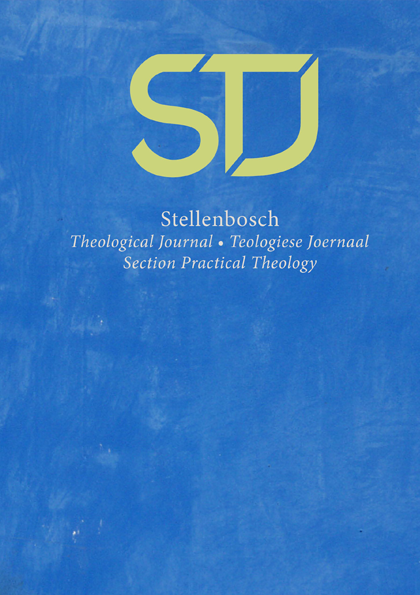Grave as space for grace – “Come you sweet hour of death!
On seeing the beauty of aging and dying within an aesthetics of mortality and decay (human decomposition)
DOI:
https://doi.org/10.17570/stj.2022.v8n2.a9Abstract
Within the ineluctable contingency of death and dying as horrifying and terrifying existential prospects, the notion of “grave” immediately corresponds with the natural facticity of human decomposition and the fear for death and dying. Decomposition is, in fact, a natural process beginning several minutes after death, with a process called autolysis, or self-digestion. From a pastoral and spiritual perspective, the following research questions surface: Could a Christian spirituality of grace and a theological aesthetics of brokenness contribute to start seeing in the loss of body physique and the exposure of life to the inevitable process of existential disintegration and eventual decay, a growth perspective (embodied spirituality) that contributes to the beautification of both living and dying? Rather than a nihilistic approach, it is argued that in a Christian meta-physics of resurrection hope, an eschatological approach discovers in decay, aging and deterioration, a “more” than dust-of-death-perspective. An aesthetics of immortality implies a “spirituality of more” transcending the death and funeral formula of “ashes for ashes, dust to dust”. It even surpasses an epistemology of empirical seeing and observational reasoning reducing human embodiment to the decomposition of a mortifying body, lying under the ground: “Stinking like a rotting carcass, and consumed by maggots and worms” (Martin Luther). According to Paul’s argument in 1 Corinthians 15:37–38, the natural body (psychikon), and the so called “soulless corpse”, are in fact not to be reduced to organic processes of decomposition. In an aesthetics of mortality, human embodiment is about a spiritual process of pneumatic germination bodies (pneumatikon). Perhaps, the reason why J. S Bach wrote a cantata with the challenging title “Come you sweet hour of death”.
Published
How to Cite
Issue
Section
License
Copyright (c) 2023 Daniël Louw

This work is licensed under a Creative Commons Attribution 4.0 International License.
https://creativecommons.org/licenses/by/4.0/
Authors who publish with this journal agree to the following terms:
Authors retain copyright and grant the journal right of first publication with the work simultaneously licensed under a Creative Commons Attribution License that allows others to share the work with an acknowledgement of the work's authorship and initial publication in this journal.
Authors are able to enter into separate, additional contractual arrangements for the non-exclusive distribution of the journal's published version of the work (e.g., post it to an institutional repository or publish it in a book), with an acknowledgement of its initial publication in this journal.
Authors are permitted and encouraged to post their work online (e.g., in institutional repositories or on their website) prior to and during the submission process, as it can lead to productive exchanges, as well as earlier and greater citation of published work.
Please note that erroneous copyright information is given in the PDFs before Volume 9, 2023.



